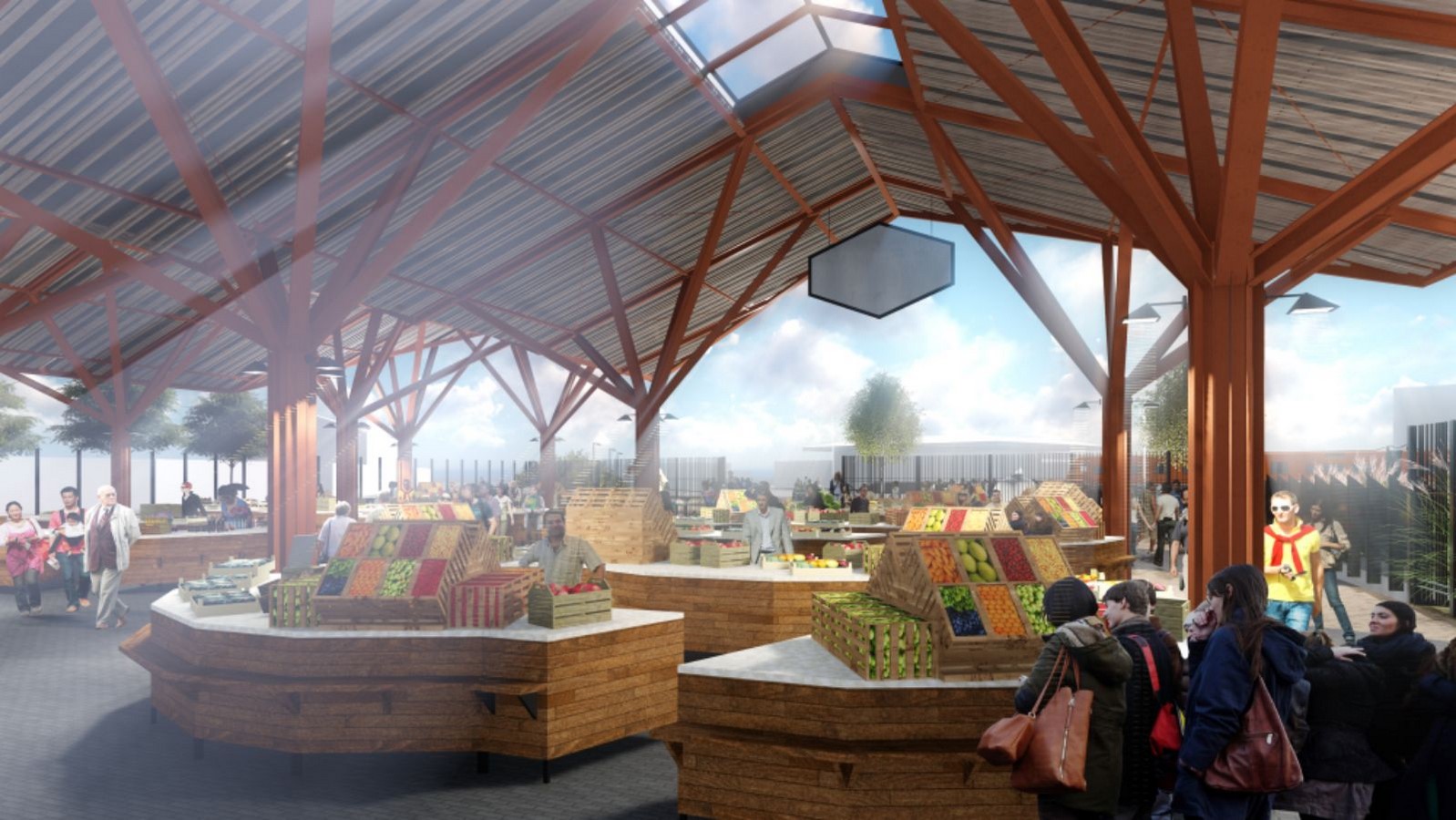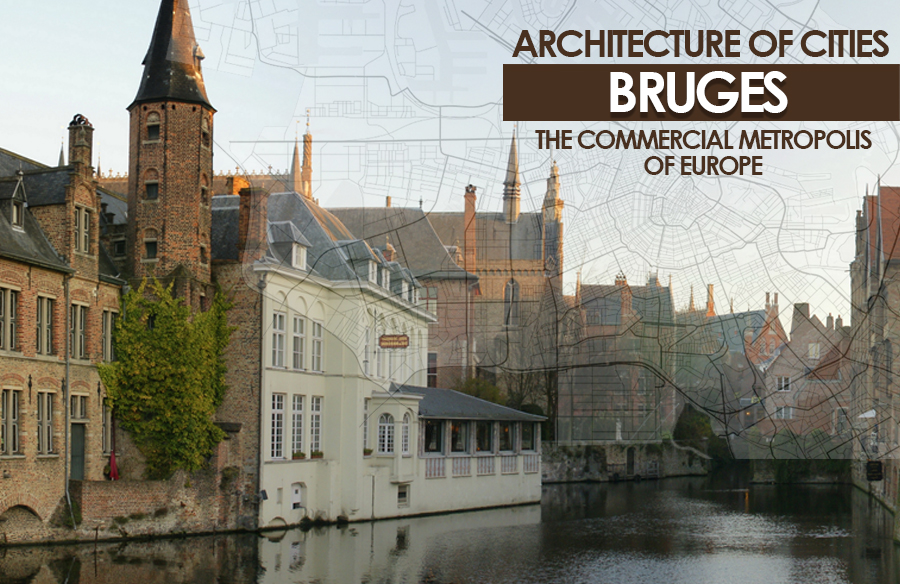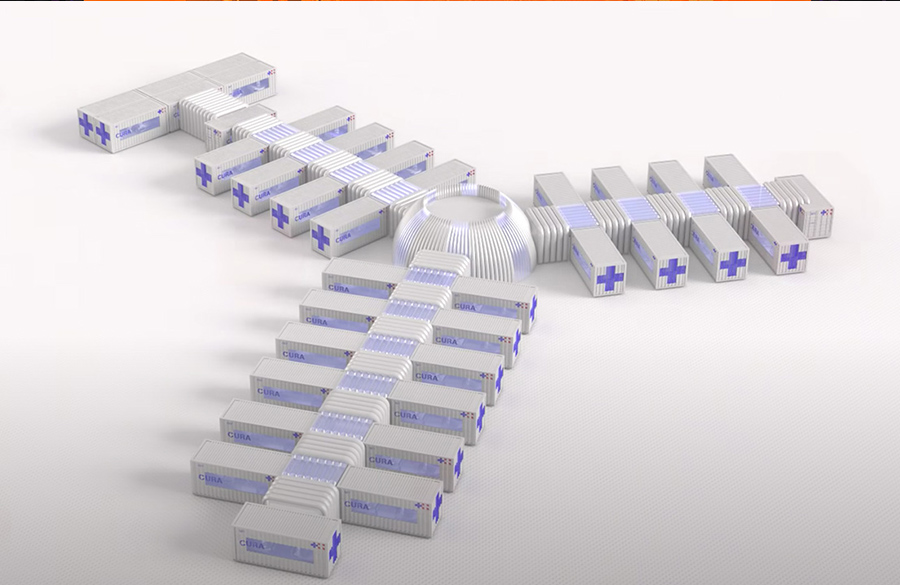The urban realm of countless cities underwent sudden changes due to the pandemic and had severe ramifications. And at the heart of this were the marketplaces that proved to be crucial for continual and safe functioning. Markets are quintessentially public spaces that take numerous forms with response to context and needs. Majorly, they are dense spaces that also function as the social infrastructure of the area. They play a vital part in the local food supply and generating regional economy. With the pandemic, a multitude of the markets had to be either closed down or operated with strict restrictions. And they lost their character of being sociable in public spaces. As these markets helped sustain the livelihoods of many traders and merchants, their functionality was a must. It is where architecture comes in.
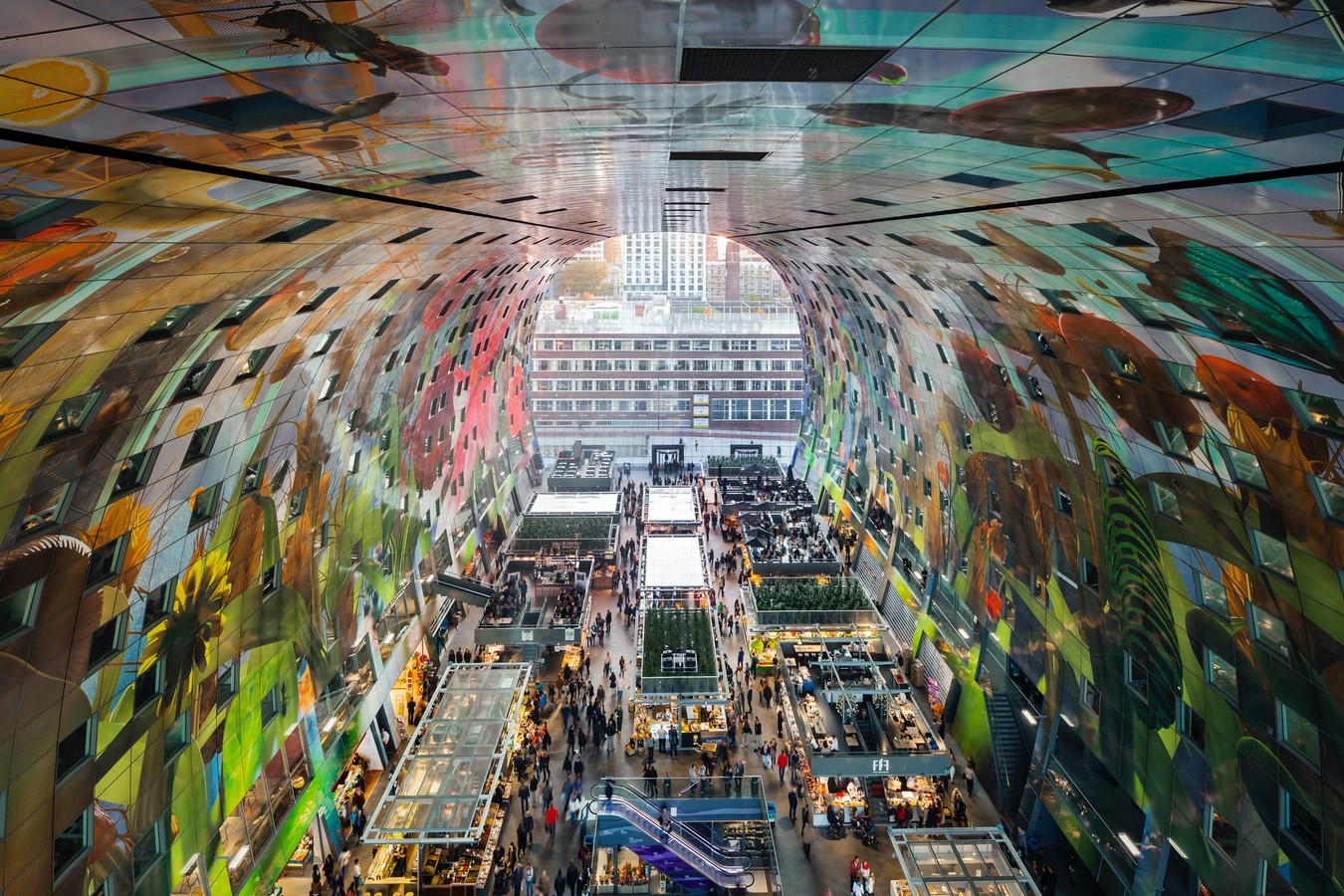
As a part of the urban public realm, the markets can either be permanent or temporary structures, built with sustainable and locally sourced materials. Architecture plays a vital role in the efficient functioning of these spaces, by establishing a relationship of the built and unbuilt. To reduce the spread of infection, a simple method can be implemented in public spaces, which is physical distance. As per the norms, having a physical distance of at least 1.5 m from the public can help in reducing the contagion. So, let’s see the different ways in which architecture can create safe spaces by helping to maintain physical distance in markets.
Short-Term Changes
Circulation – Access Points
A majority of the markets are semi-open or temporary structures with multiple access points for free-flowing crowds. It creates a multi-directional circulation of the people and may result in gathering or crowding. As a response, the market design could have separate entry and exit points, with no dead-ends to keep the circulation flowing. Additionally, it creates a one-way flow to the public circulation, allowing people to maintain physical distance.
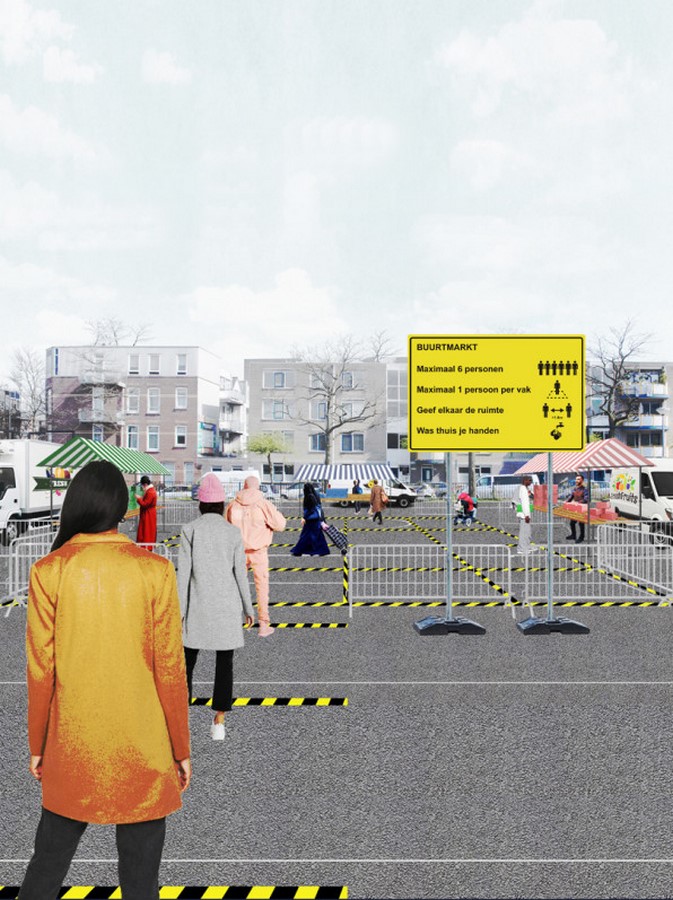
Physical Blockades and Signages
To reduce crowding in the marketplace, the number of people allowed to inhabit the market can be kept small. It may result in the formation of queues to enter the market. In this case, signages and markings on the floors can help direct people to maintain social distance. Once entering the market, the spatial arrangement of the stalls can be redesigned to allow space for physical distancing. One way is by occupying every other stall to keep a distance of at least 2 m. It would result in a smaller number of stalls, and hence the stalls can be utilized for alternate days could be proposed to provide a space for all the traders and merchants. In addition, stalls can have barricades to have safe interactions. These can be in the form of extra tables in front of the counters or plastic PVC sheets, acrylic sheets to form a barrier. The sheets are easy to clean and allow interaction due to their transparency and can be used when there is a low allowance of space.
Pick-up Spots
A pick-up spot can be designed for the specially-abled and senior citizens to avoid entry into the market. It would reduce their risk of getting exposed and help in the regulation of the number of people in the market. It is a simple design modification that can serve in maintaining a physical distance.
Long-term Changes
Expansion
The markets can be expanded by adding another floor or by simple extensions. It could help in the distribution of stalls and create additional space for the public to maintain physical distance. It would also allow a larger number of stalls to be occupied at one time.
Credits: Balti Station Market by KOKO Architects

Modular Design
Another method for marketplaces is movable carts that can be proposed for the vendors that are stand-alone carts. The cart can be physically distanced from each other and designed concerning the vendor’s needs. These modules can have design considerations that are sustainable, germ-resistant, and self-sufficient. The modules will ultimately help form flexible spatial spaces for the public while maintaining a physical distance.
Credits: Senegal City Market by PAB Architects
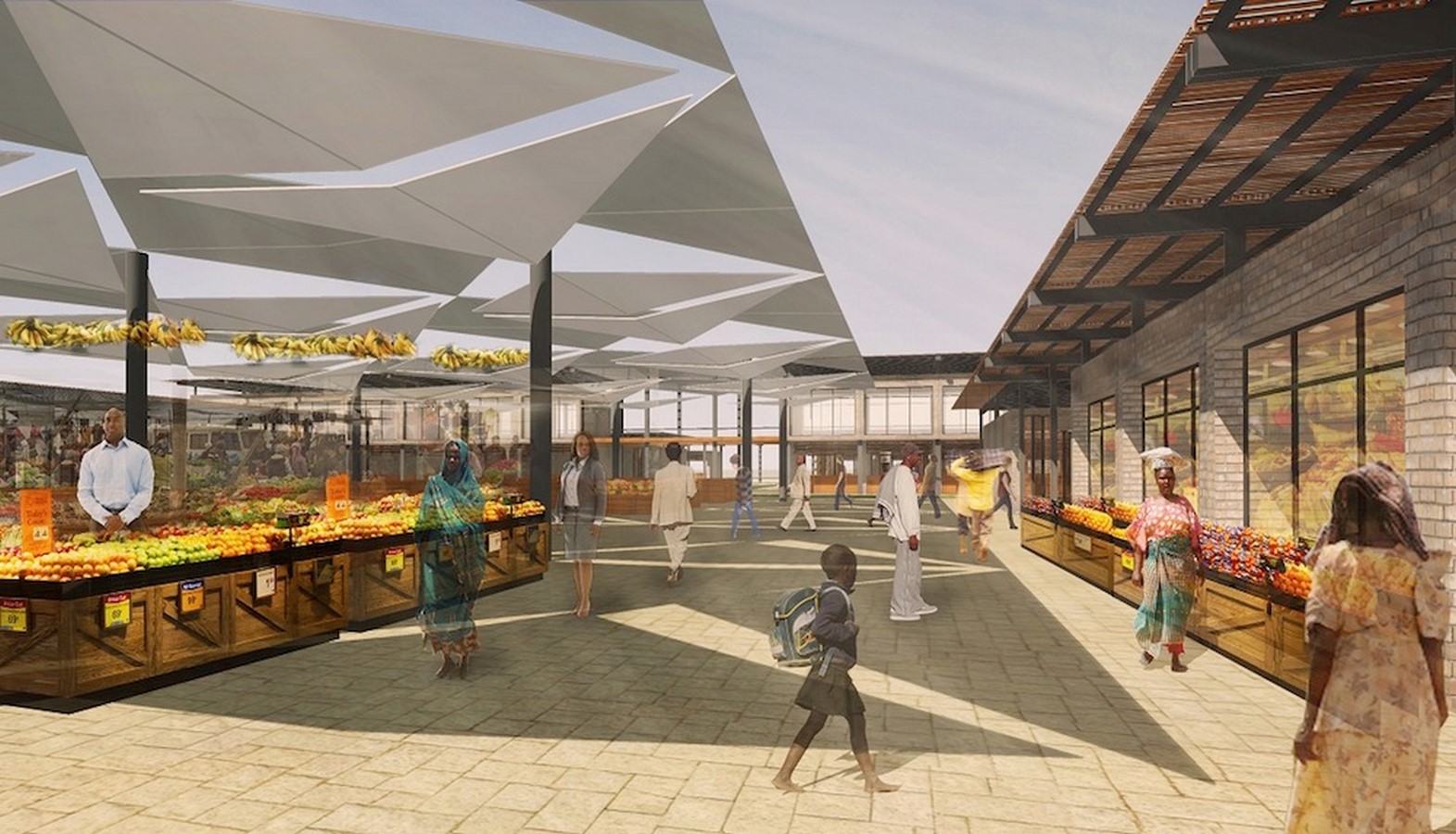
Light and Ventilation
For enclosed markets, light and ventilation are especially important to avoid the easy contagion of the virus. Skylights, clerestory windows, and semi-open spaces can be introduced to increase the intake of daylight and air. Advanced ventilation systems can be utilized for enclosed markets, like displacement ventilation, filtration, and humidity systems. It would reduce the spread of pathogens and support the exchange of air. The ventilation systems would support the compact spaces and allow functioning while maintaining the minimum required physical distance.
Retrofitting germ-resistant strategies
Public spaces involve surface contact that results in the spread of infection. Germ-resistant materials and finishes will help to counter the virus. Antimicrobial polymer surface is an example of a material that naturally helps to kill the virus and is easy to clean. Such materials can be utilized for various public infrastructures as a way to control the infection.
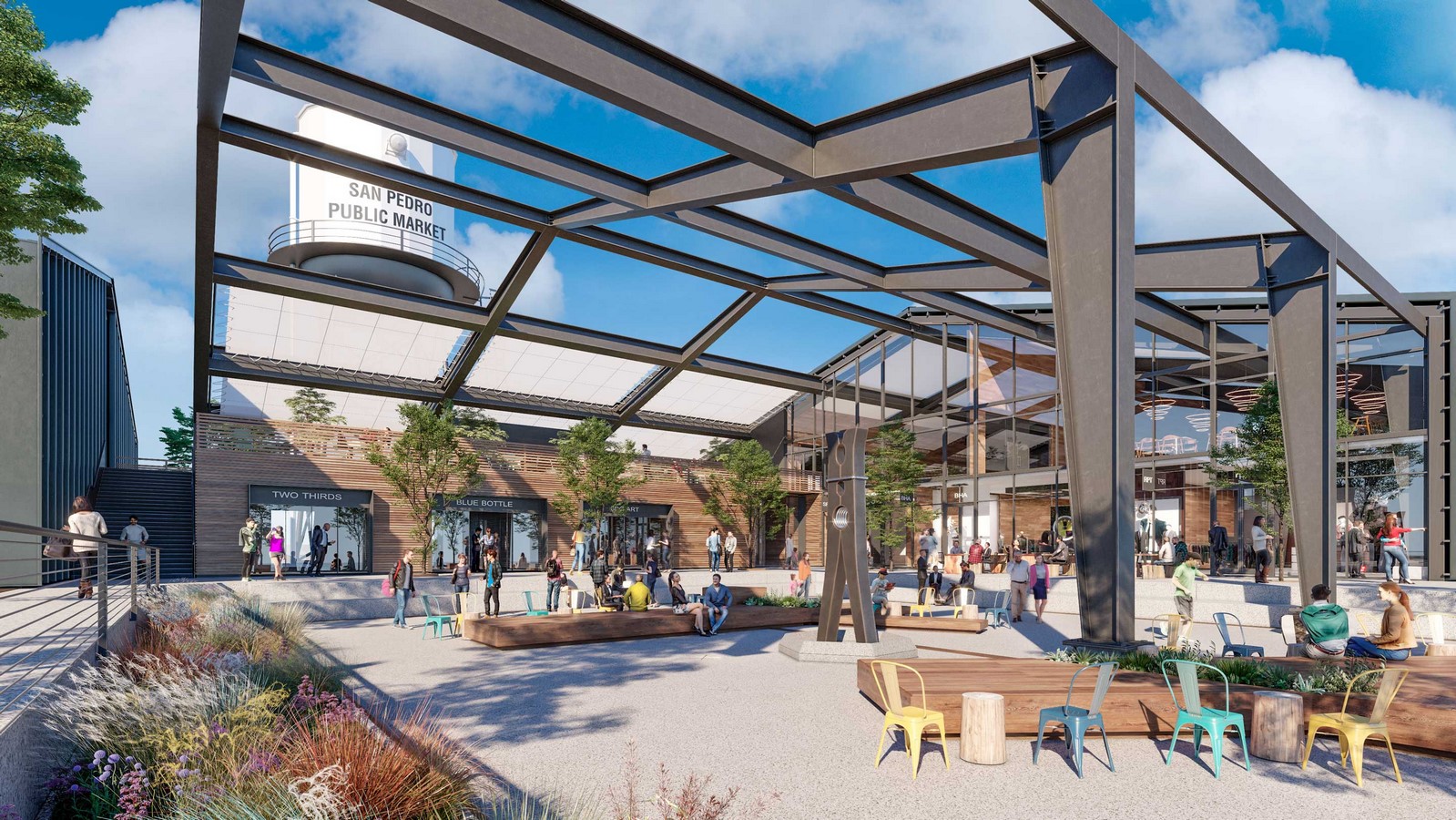
Markets are public entities that are successful when they’re flexible and adaptable to people’s needs. With the pandemic hampering such public spaces, interventions and design modifications are vital to their continual functioning. Additionally, sanitization points and the basic infrastructure of common wet areas with accessible taps and basins have become mandatory to ensure better hygiene. The quality of public infrastructure is evaluated based on sterility and the availability of space. With this, architecture becomes integral in the short-term as well as long-term modifications required for the efficient functioning of public spaces. And maintaining physical distance is a simple way to achieve safe spaces.
References
Nessim, Marian & Dina, Salem & Khalifa, Sara. (2021). Urban Markets Redesign for Safe Operation In The Age Of Covid 19, Case Study: Tablita Market, Cairo, Egypt. HBRC Journal, Volume 17 (Issue 1), Pages 255-287. Available from: https://www.tandfonline.com/doi/full/10.1080/16874048.2021.1936970
van Eck, Emil & van Melik, Rianne & Schapendonk, Joris. (2020). Marketplaces as Public Spaces in Times of The Covid-19 Coronavirus Outbreak: First Reflections. The Geography of the Covid-19 Pandemic, Volume 111 (Issue 3), Pages 373-386. Available from: https://onlinelibrary.wiley.com/doi/10.1111/tesg.12431



